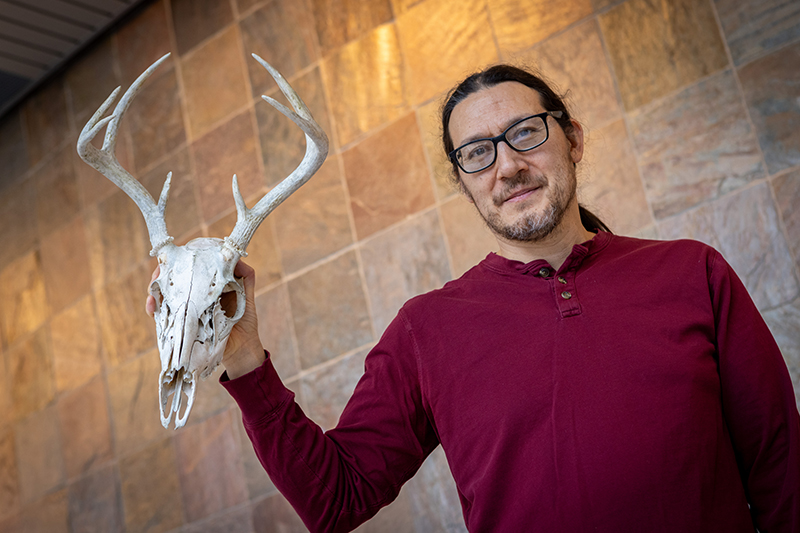- Apply
- Visit
- Request Info
- Give
Biologists confirm local lore that Nantucket’s deer boom stems from two Michigan does
Written by Lucinda Weiss
Published on December 18, 2023

Most of the deer on Nantucket Island, which has one of the densest deer populations in the Northeast, likely descend from two does that were introduced to the island from Michigan in 1926. This conclusion is found in a new research paper in “Northeastern Naturalist” co-authored by Bryan Connolly, associate professor of biology at Eastern Connecticut State University.
The paper confirms a local legend in Nantucket. Through DNA sequencing, Connolly and fellow researchers showed that Nantucket’s White-tailed Deer are genetically like Michigan deer, but their genetic makeup varies from their closer New England neighbors.
Connolly became interested in checking out the local story of the deer’s origins a few years ago when he was the state botanist in Massachusetts. He was investigating the loss of plant biodiversity on the island, where deer browsing was rampant.
“Every time you try to protect native plants, there’s always a deer issue,” he said.
He heard the local story that the Nantucket deer population began with one exhausted buck who was rescued by local fisherman in 1922 as he tried to swim across the Nantucket Sound. The fishermen brought the buck to the island and released him, according to the Nantucket Historical Association. In 1926, a summer resident brought two does from Michigan and had them “liberated” near Squam Swamp on Nantucket “to keep the solitary buck company,” the historians wrote.
“If the account of the origins of the deer on Nantucket is correct, this successful population was founded initially by only three individuals, which would be an extreme example of the founder effect,” the authors wrote. That is, the gene pool reflects the genetic makeup of a small founding population.
Today there are an estimated 3,000 deer on the island, Connolly and his co-authors wrote, or about 63 deer per square mile. That compares with a density of 25 deer per square mile in Connecticut.
Under normal circumstances, a doe two years or older produces twins annually. Younger does produce single fawns. A deer herd can double in size in one year absent hunting or predators, according to the Massachusetts Division of Fisheries & Wildlife.
A deer can consume 10 pounds of food a day, slowly browsing through the landscape, which is what caught Connolly’s attention.
He contacted a colleague, biologist Richard Beckwitt at Framingham State University, the lead author on the article, who went with Connolly to collect deer pellets on the island and sequence DNA from them. The researchers then turned to a more reliable source of DNA from deer tissue, collected from hunter stations, with the help of Sarah Bois, another co-author who lives in Nantucket and works for a nature foundation there.
Their DNA analysis was based on mitochondrial DNA, or maternally inherited DNA. By comparing DNA from the Nantucket samples to samples from elsewhere in Massachusetts and New England and from Michigan, the researchers established that most deer on Nantucket indeed originate from the two founding females from Michigan. A small percentage are related to five deer that were later introduced to the island from New Hampshire.
While deer are strong swimmers, the distance of Nantucket from neighboring land (around 12 miles to the Monomoy peninsula on Cape Cod and eight miles to Chappaquiddick Island) make it unlikely that female deer swam there, the researchers noted.
When English settlers arrived in 1649, there were no deer on the island, according to the historical association. Earlier settlers on Nantucket, the Wampanoag tribe, hunted deer year-round and relied on them for food, the state’s wildlife division reports.
“Our analysis of (mitochondrial DNA) variation in the White-tailed Deer from Nantucket agrees with the account that deer on Nantucket are the result of introduction,” the researchers concluded.
The paper is available online at https://www.eaglehill.us/NENAonline/articles/NENA-30-4/10-Beckwitt.shtml

